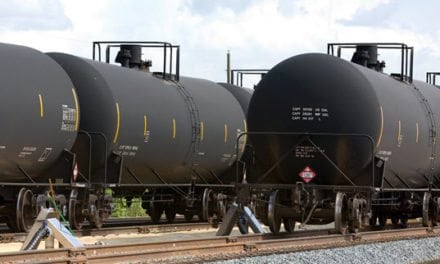Tropical Storm Harvey has been upgraded to Hurricane Harvey, and it is headed for the U.S. Gulf Coast. Weather forecasters at the National Hurricane Center predict landfall tonight or Saturday morning. The slow-moving storm has picked up moisture from warm waters in the ocean, which will bring heavy rains and flooding. Many areas will receive 12 inches of rain, and some areas could receive as much 25 – 35 inches of rain.
The storm was upgraded when sustained winds were measured within the Category 1 hurricane range of 74 – 95 miles per hour (mph), as defined by the Saffir-Simpson hurricane wind scale. The hurricane strengthened to Category 2 at around midnight, defined as having winds in the range of 96 – 110 mph. If Hurricane Harvey makes landfall as a Category 3 hurricane, winds would be 111 – 128 mph. This would make it the strongest storm to hit the U.S. since Hurricane Wilma hit Florida in October 2005, and it will cause devastating damage.
Companies including Anadarko, Shell and ExxonMobil have evacuated personnel from offshore oil platforms. An estimated 10% of Gulf crude oil production is affected. Companies including Valero, Flint Hills, ExxonMobil and Citgo have closed refineries and oil terminals. Approximately 1 million barrels per day (MMbpd) of crude refining capacity has been shuttered. The U.S. Coast Guard shut Houston-Galveston ports to incoming ships. Many residents along the southwestern Texas coast have evacuated, creating heavy traffic on roads leading out of Corpus Christi.
Crude oil prices have been subdued, in part because the path of the storm has tracked the coastline, and in part because the majority of U.S. production is located onshore. The shutdown of refining capacity will temporarily reduce demand for crude, but it will tighten refined fuel supplies in the Gulf Coast region, particularly in Corpus Christi, San Antonio and Dallas. Gasoline prices are rising in the Gulf Coast market.
West Texas Intermediate (WTI) crude prices so far today remain in the range of $47.50 – $47.75 per barrel (/b). During the week, oil prices weakened Monday and Tuesday. The downward trend leveled off with reports of crude inventory drawdowns. The Energy Information Administration (EIA) reported a drawdown of 3.327 million barrels (MMbbl) from crude inventories, plus a drawdown of 1.223 MMbbls from gasoline inventories. There was a small addition of 0.028 MMbbls to diesel inventories.
WTI crude opened at $47.62/b this session, a drop of 74 cents from yesterday’s opening. Currently this morning, WTI prices are $47.68/b, up by 6 cents since today’s opening. The daily price range has been $47.47/b – $47.87/b. WTI opened on Monday at $48.72/b, so as of the time of writing, crude prices are down by around $1 for the week.









